It seems we can’t find what you’re looking for. Perhaps searching can help.




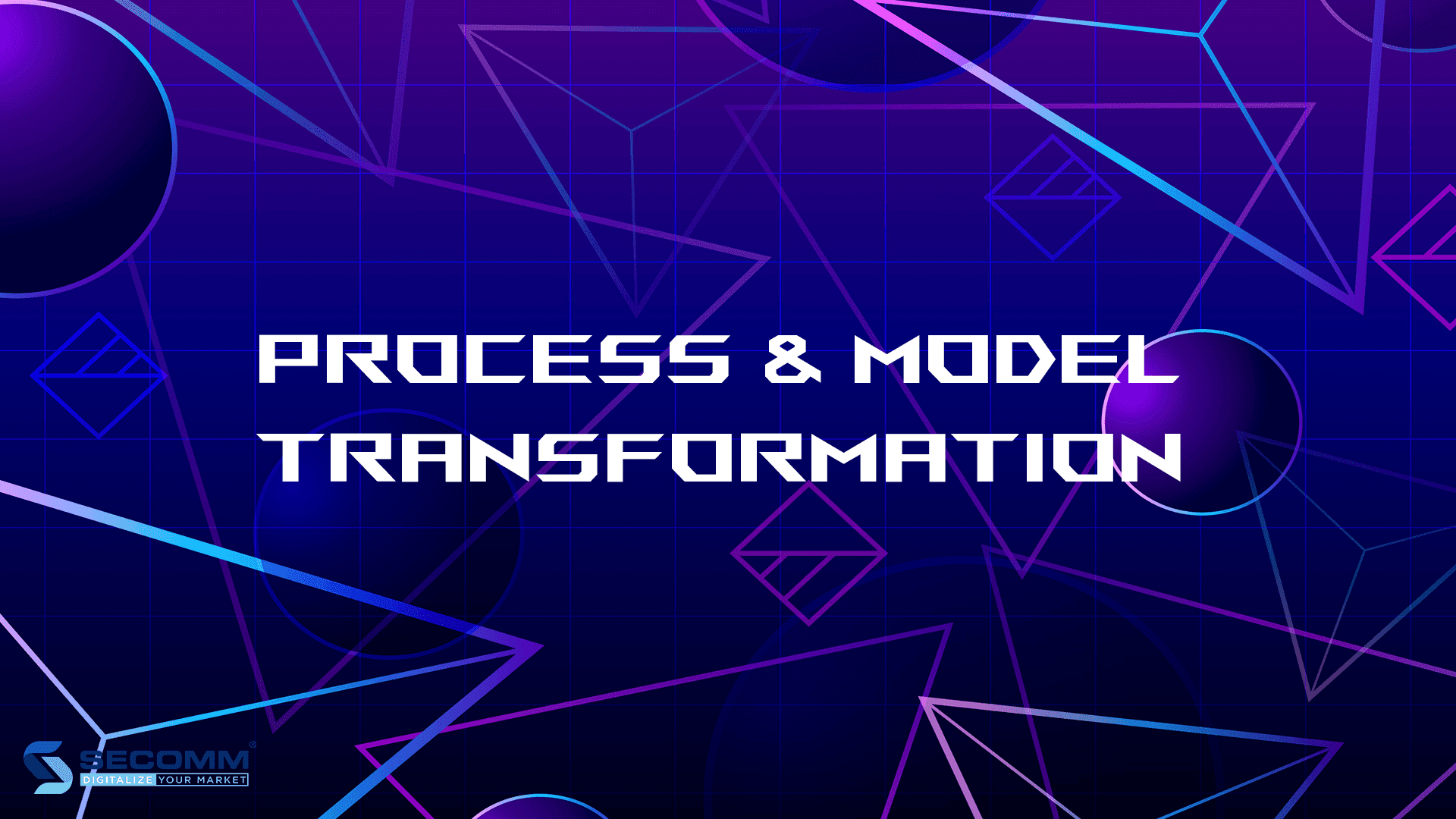
READINESS FOR PROCESS AND MODEL TRANSFORMATION
1. Challenges for business process and model transformation
Given the characteristics of the current Vietnamese market, digital transformation has received positive attention from enterprises. However, this process still faces many cultural barriers, strategies, and implemented technologies that make the process and model transformation not entirely useful.
Cultural barriers in process and model transformation
The corporate culture foundation is a crucial determinant contributing to the model transformation progress. Culture concepts refer to quite large factors of human resources (HR) thinking and perception existing inside the business, including:
- Leadership thinking
- HR potential
- Connection between the two above
The most significant problem creating cultural barriers is the traditional business ideology that developed businesses cannot collapse by digital transformation requirements or any other peripheral factor. It was not until being trapped by the outdated technology that they found they significantly fell behind the bustle of a much more modern market.

For corporate culture, leadership is the core value creating a complete preparation process to start a digital transformation strategy. The leadership factor plays a decisive role in the business’s strategic changes, simultaneously helps all employees understand and adapt to these changes fully and quickly. In particular, key leadership positions such as CEO, CTO, and other decentralized management levels are the driving force behind implementing more micro changes for each employee. Finally, rely on individual conversions to shape the overall change-process in the digital transformation strategy.
To satisfy all the above conditions, an organization needs prolonged-vision leaders of the current business models. It is complacency and “resting on their laurels” that make the traditional models stumble into the old path and have difficulty maintaining the position they once had in the market.
The HR potential is the next factor in becoming a cultural barrier in the process and model transformation. A significant change often encounters many difficulties when it comes to impacting HR awareness.
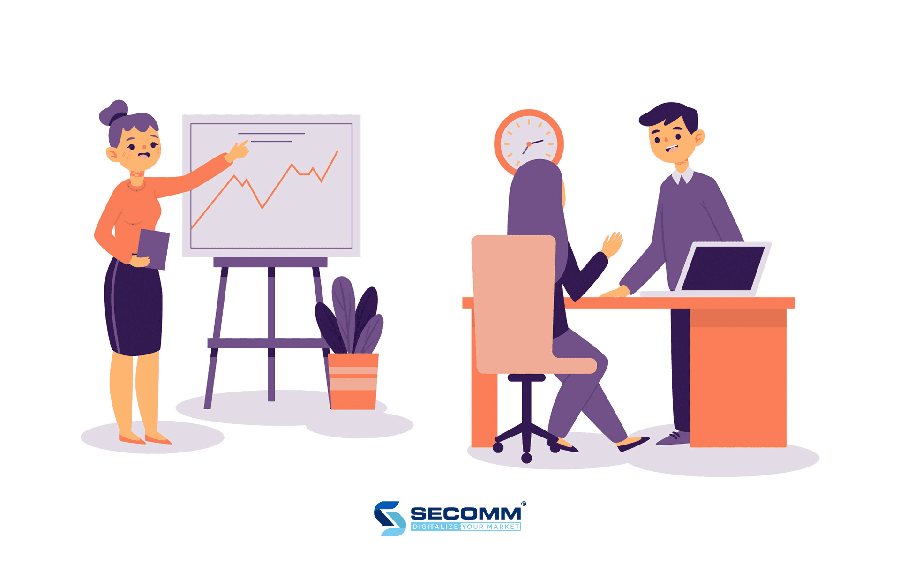
No matter how strong the HR is, it will be disrupted in the beginning if employees don’t fully get preparation for a ready-to-change and adaptive mindset. Lack of staff training in digital transformation strategy is likely to face harsh objections from the inside if forcing them to suddenly change their working style while they do not have enough time to adapt to new workflows. Simultaneously, the HR potential will also be a dangerous weapon that demolishes the digital transformation results if it is not prioritized and used accurately.
Among the two human factors, the coherence and connection between them also play an essential role in corporate culture. Connectivity includes the spiritual values businesses build to promote consensus, cooperation, and trust to turn strategies into realistic actions. The discrete connection or the disparity in digital capabilities reduces both efficiency and progression of the whole process and model transformation strategy.
Technology challenge
There are two behavior tendencies in businesses making technology a barrier to process and model transformation strategies: being afraid of technology-changing mindsets that lead to obsolescence and technology-overusing that lead to wasting cost and time.
Up to 80% of SMEs in Vietnam use old technologies in the 1980s (statistics from the Vietnam Chamber of Commerce and Industry – VCCI) report. In addition to objective reasons such as lack of staff, skills, lack of a robust digital platform, it is much more significant that limited thinking and understanding in technology application are fundamental causes impacting the digital transformation process.
Indecision in adopting technology is also a negative factor. Technology overuse can create unnecessary conflicts with the process and model transformation. These techs will not bring optimal efficiency but a waste of budget and time to recover. Technology is a driving tool for digital transformation, and at the same time, it is also a rule-setter for businesses in the digital market. However, it is more important to decide which technology is suitable for which model instead of determining how many technologies to apply.
2. Solutions for process and model transformation
Technology orientation in process and model transformation
Technology solutions can solve lots of problems with data and process optimization inside a business. In the very beginning, they need to fully and comprehensively redefine existing processes, and at the same time, model them into maps and charts to identify:
- How specifically each of the whole process elements works,
- Factors need having a priority in that process,
- Interoperability, two-way relationship between processes when running concurrently.
Analysis and control of the entire processes help businesses find out weaknesses and facing-problems, then apply more appropriate technology solutions to optimize the process and model transformation.
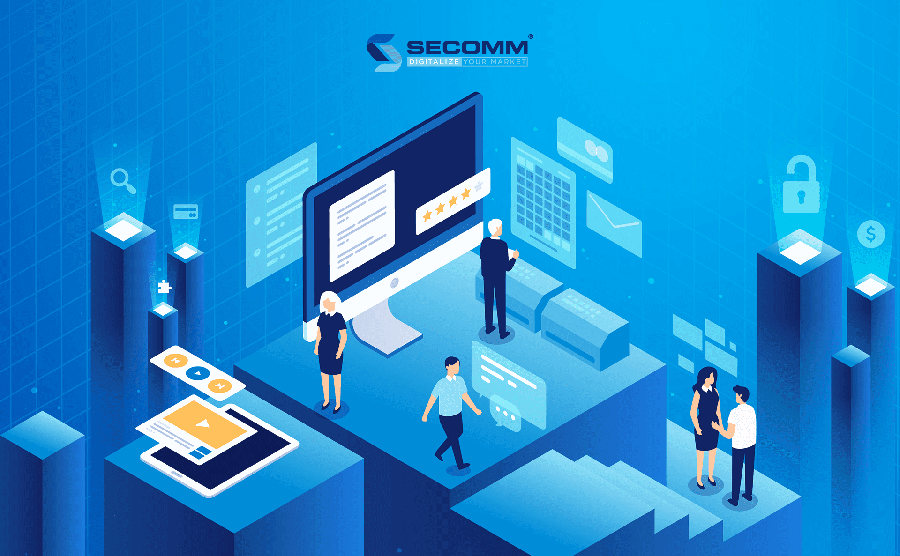
At present, a business has hundreds of requirements with suitable technology-types for their concurrent process and model. However, companies can develop solutions based on combining the big-four technology platforms in digital transformation: Big Data, cloud computing, artificial intelligence, and the Internet of Things. These tech-types possess lots of outstanding benefits that businesses can apply to create the most suitable digital solutions:
- Big Data: A potential resource with a considerable data-amount that businesses need to exploit vital information to serve fully digital transformation requirements – optimize customer experience and maximize business performance.
- Cloud Computing: the ideal storage and analysis platform for big data and other digital transformation applications. Cloud computing possesses outstanding advantages that can meet varied requirements for more than 90% of businesses in the today-market. This tech-type can significantly reduce management costs, operating workforce while increasing automation, work-load velocity, and optimizing the resources-using inside the company.
- Artificial Intelligence – AI: It helps businesses perform intelligent automation functions that could substitute for humans in the future. Currently, AI is delivering positive results when businesses apply it to many different fields indeed, typically:
- Marketing: search-engine optimization, sales system, building a customer-based personalization, and more,
- Manufacturing: improving supply chain momentum using coordination robot systems instead of human resources, fully automated product quality control and monitoring systems, inventory-forecast software, and so much more.
- Internet of Things – IoT: The connection between hardware and software in a system, scalable and integrating customized-functions to suffice end-consumer requirements while ensuring data confidentiality and security.
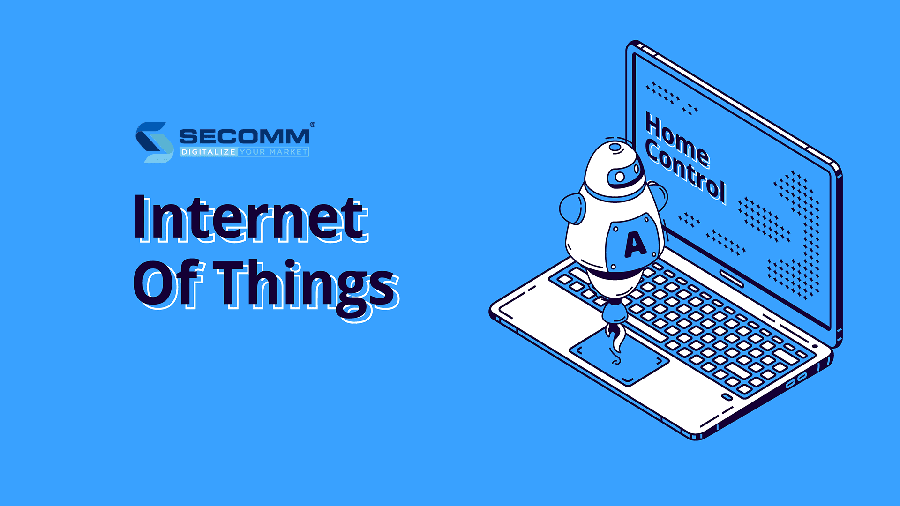
Organizational culture re-creation
Human and cultural solutions will effectively address corporate sustainability, change, and develop a digital transformation mindset for all employees in strategies and initiatives products/services to increase advantages over competitors.
- Leadership thinking: plays a crucial role in building a specific vision and plan for the business process. This term is an unavoidable revolution for the lead-generation to proactively embrace innovations, be ready to perform new experiments, and make quick decisions to move businesses consistent with the market’s growth effectively.
- Empowering culture: forming rights and obligations in each of the tasks employees undertake. At the same time, businesses can build an open culture where every staff becomes an archetypal representative in all connections with customers and the market. Deriving from core value “employee-centricity”, the digital transformation culture will develop into a complete model including the following components:
- Customer-centric orientation: to optimize the customer experience in the digital age,
- Innovations: to continually examine new transmutations and eliminate unsuitable factors inside the business model.
- Flexibility, understanding when making decisions based on digital data: to thoroughly and accurately exploit customer needs from a huge source of big data.
- The spirit of cooperation based on a modern-and-open culture are two factors creating the spirit of proactiveness and agility in all plans and actions also.
- Digital-first mindset: the ability to use and apply accurate technologies to produce appropriate and reliable digital solutions.
Businesses can complete the process and model transformation with technology and cultural solution-orientations. Therefore, technological solutions will maximize their business operation efficiency. They also contribute to stimulating businesses to be always requirement-active in the digital age. And these positive results are based on a sustainable digital culture possessing robust and responsive leader-generations combining with high-quality human resources.
 2
2

 1,812
1,812

 1
1

 1
1
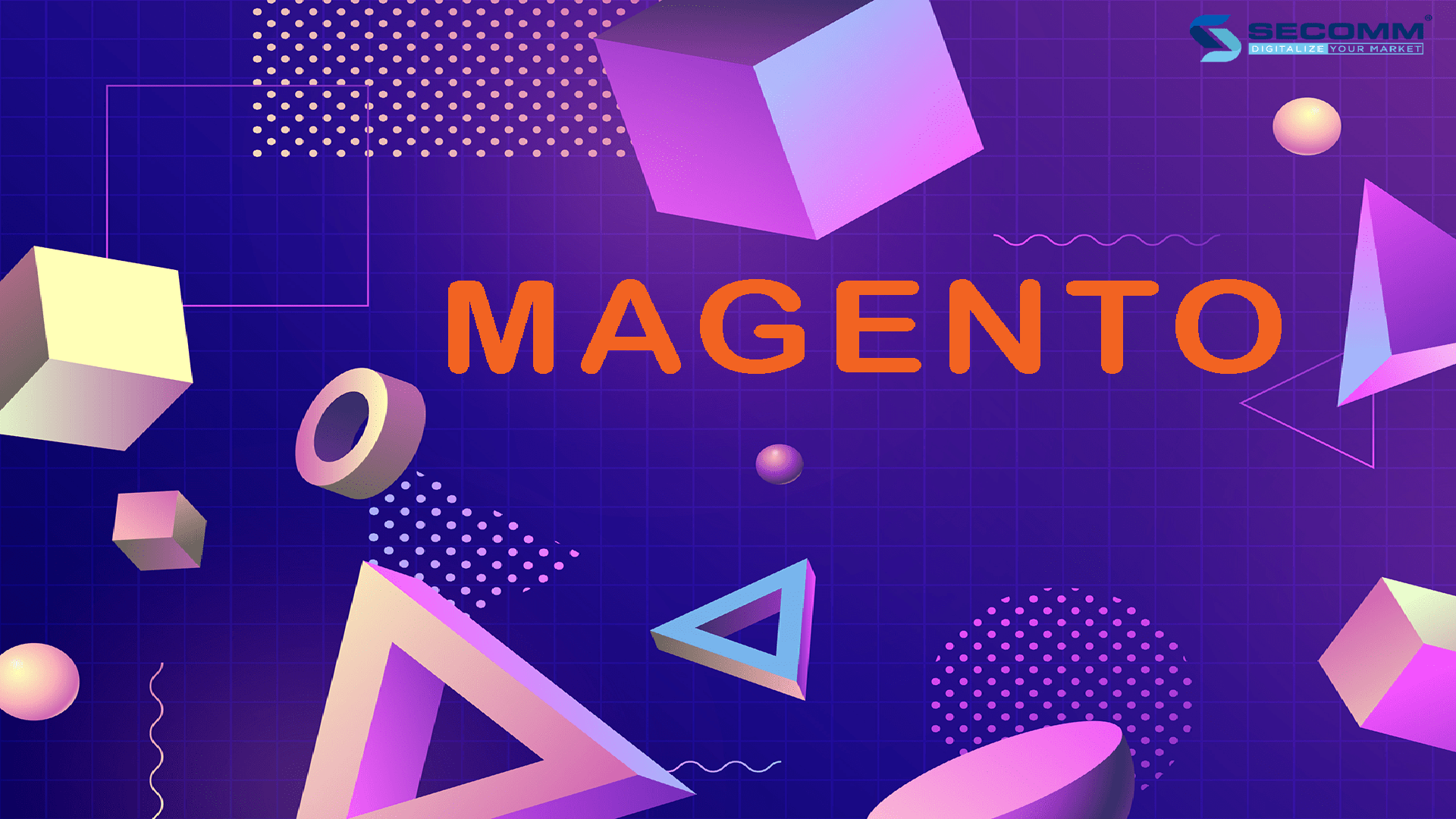
A LOOK BACK ON THE MAGENTO TIMELINE
1. Highlight functions of Magento that reign the ecommerce Market
A huge range of Magento functions not only conquers the interest of the web developer community but also reigns the world as one of the leading ecommerce platforms. Talking about its various highlight power, the ecommerce market is probably the place to get benefits from this platform.
PWA Studio of Magento (Progressive Web App)
With the amazing benefits of PWA, Magento developers cannot afford to miss this special opportunity. Then, Magento PWA Studio was born as an interface solution for ecommerce websites based on the Magento platform. With fast page load time, optimal performance, Magento PWA Studio has provided the best user experience, making ecommerce web pages more reliable and consistent across devices.
Great scalability
One of the salient advantages of Magento is the ability to add more extensions depending on specific user needs flexibly. That highlight makes Magento very suitable for different online businesses with various commerce activities. With this feature, website developers can integrate most extensions, including free or paid versions, to customize Magento with the best performance.
SEO maximization
One of the important functions of the open-source platform is to integrate features supporting SEO maximization. Magento is considered to be a platform that implements SEO tools completely from product catalogs to independent products.
2. Recollecting the Magento timeline
Let’s take a look at the timeline of Magento from the very first launching in 2007 to the new upgraded versions during 2011 – 2018.
Magento timeline: 2007 – 2010
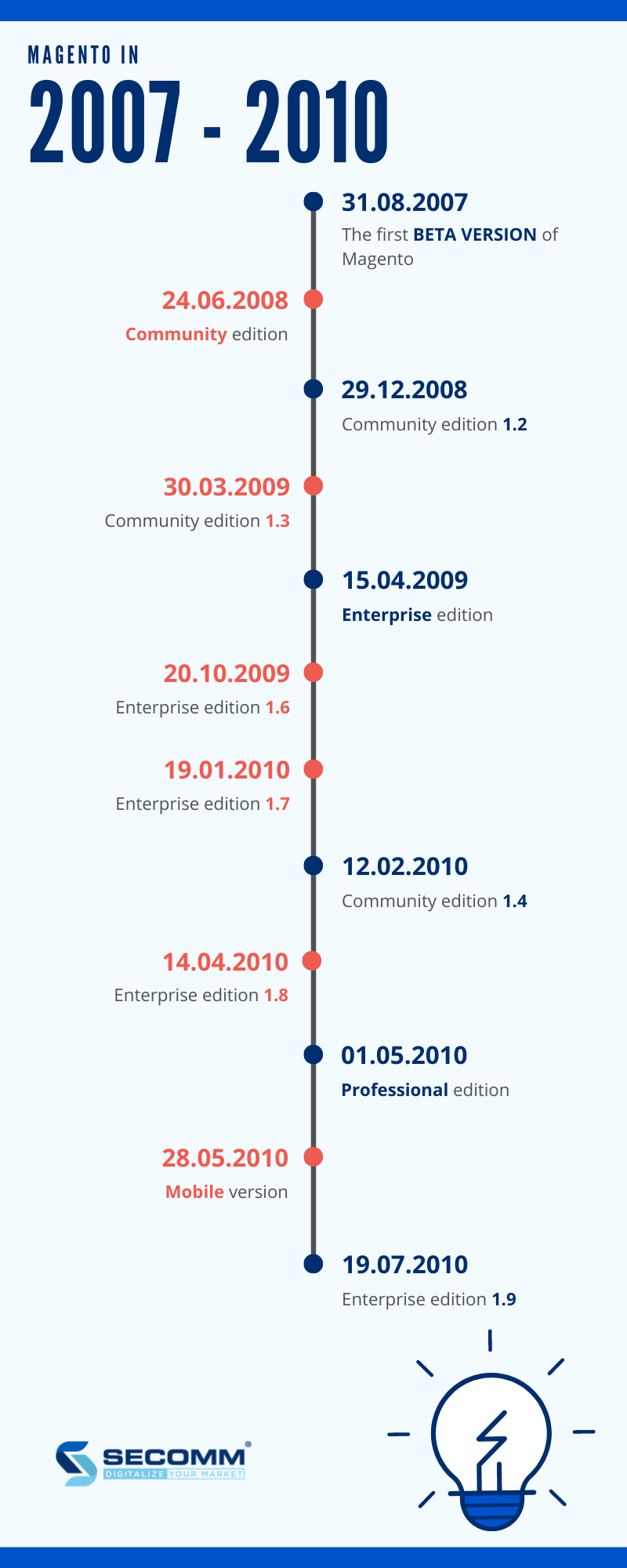
2011 – 2015
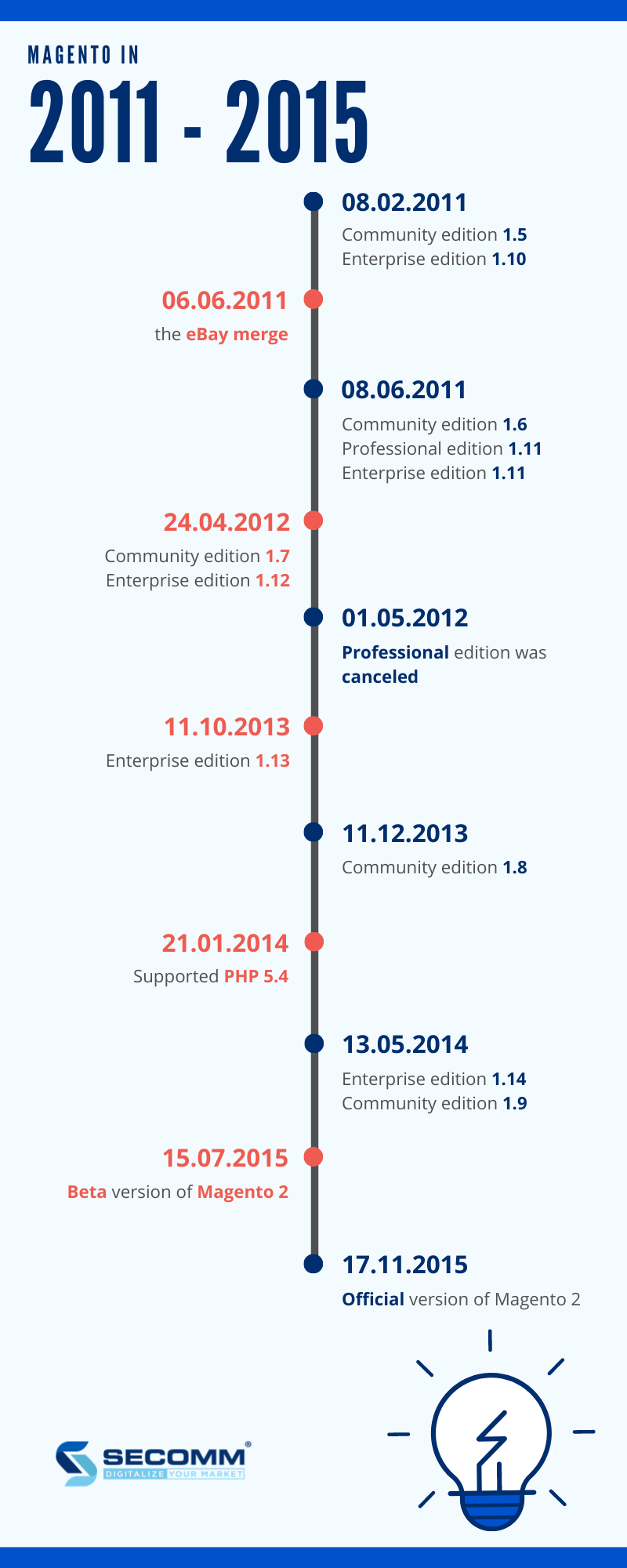
2016 – 2018
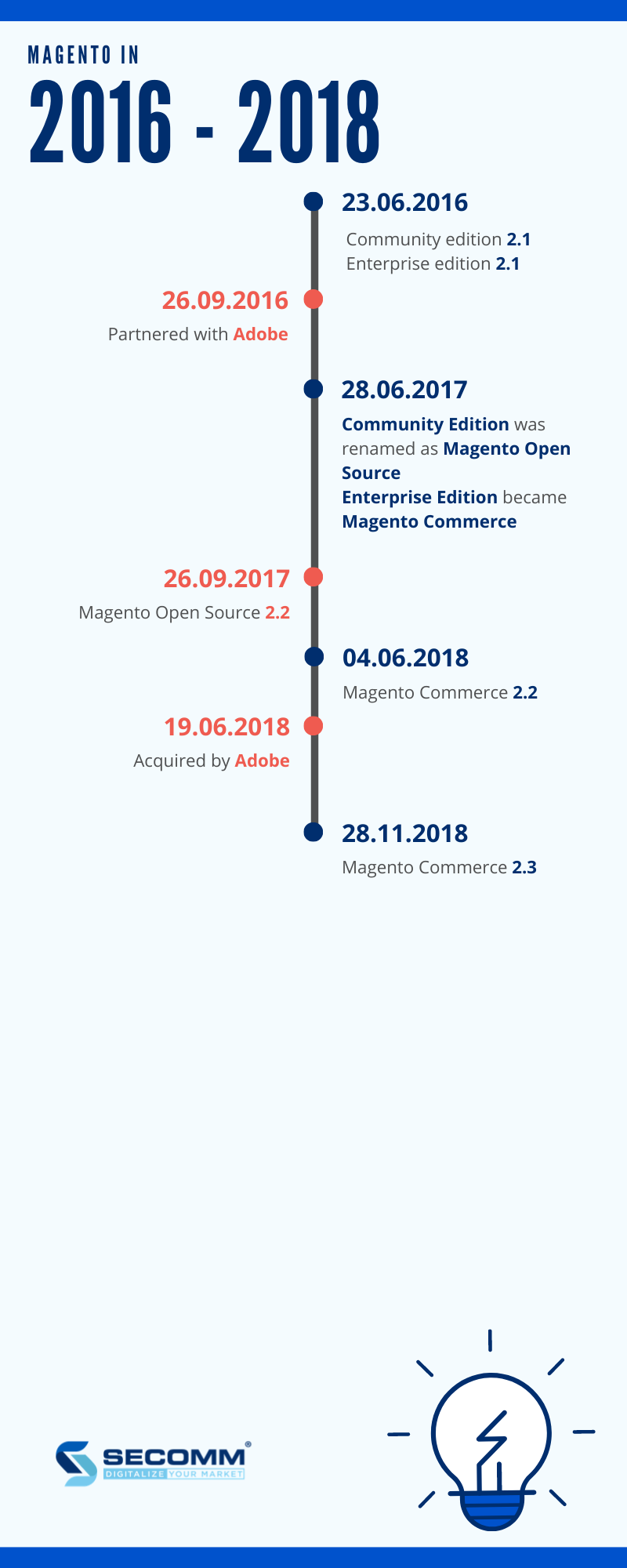
3. Facts about the Magento platform
Still, the platform is constantly being improved to meet the Magento user community’s diverse needs around the world. Truly, Magento has brought a lot of convenience and breakthroughs to the ecommerce website development industry. Below are magnificent facts about Magento you may not know.
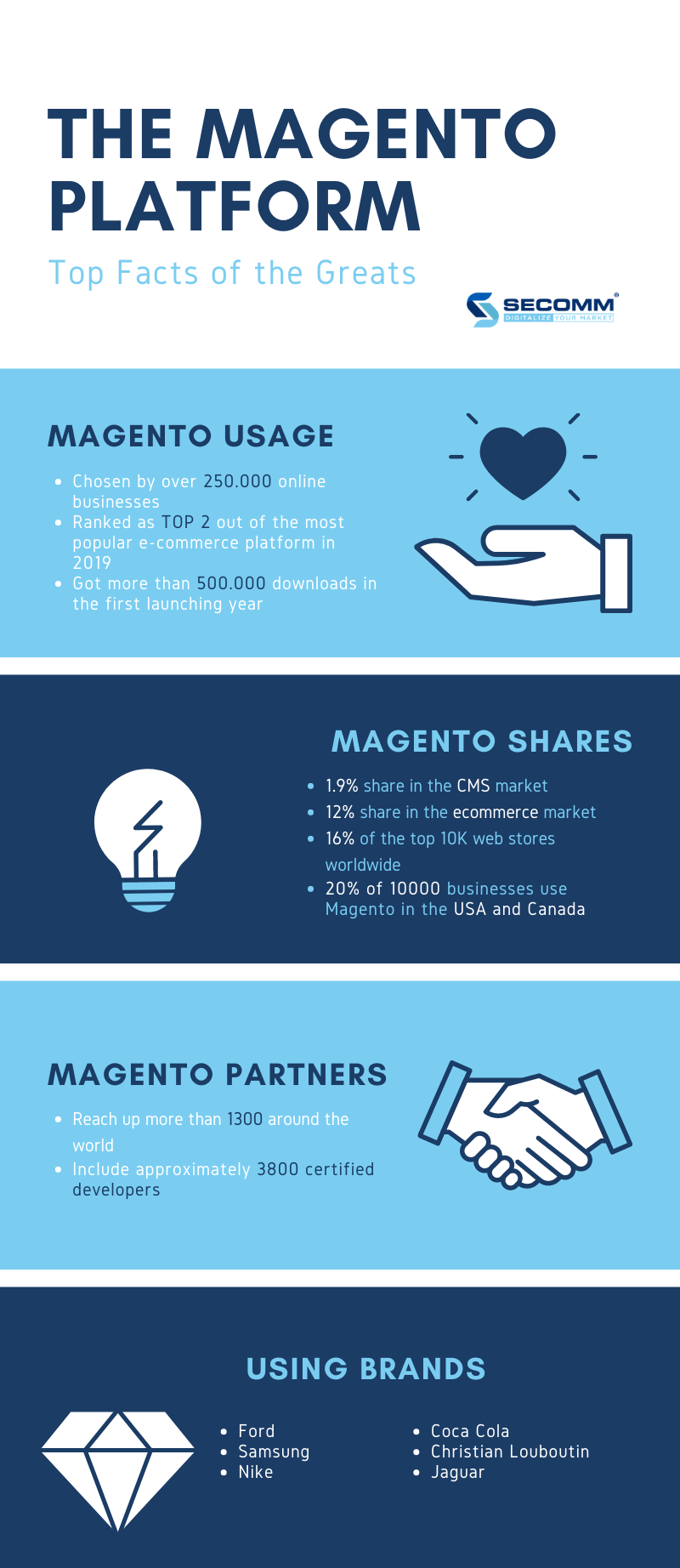
With 8-year-experience in Magento, our SECOMM team has used Magento effectively to create solutions for partners/businesses. Magento timeline includes a huge amount of needs for the user community: beautiful and diverse themes, UI/UX design, security, effective cost, and so on. Especially in Vietnam, Magento is exactly the perfect tool to help ecommerce businesses control most of the features for online stores.
 2
2

 2,615
2,615

 10
10

 1
1
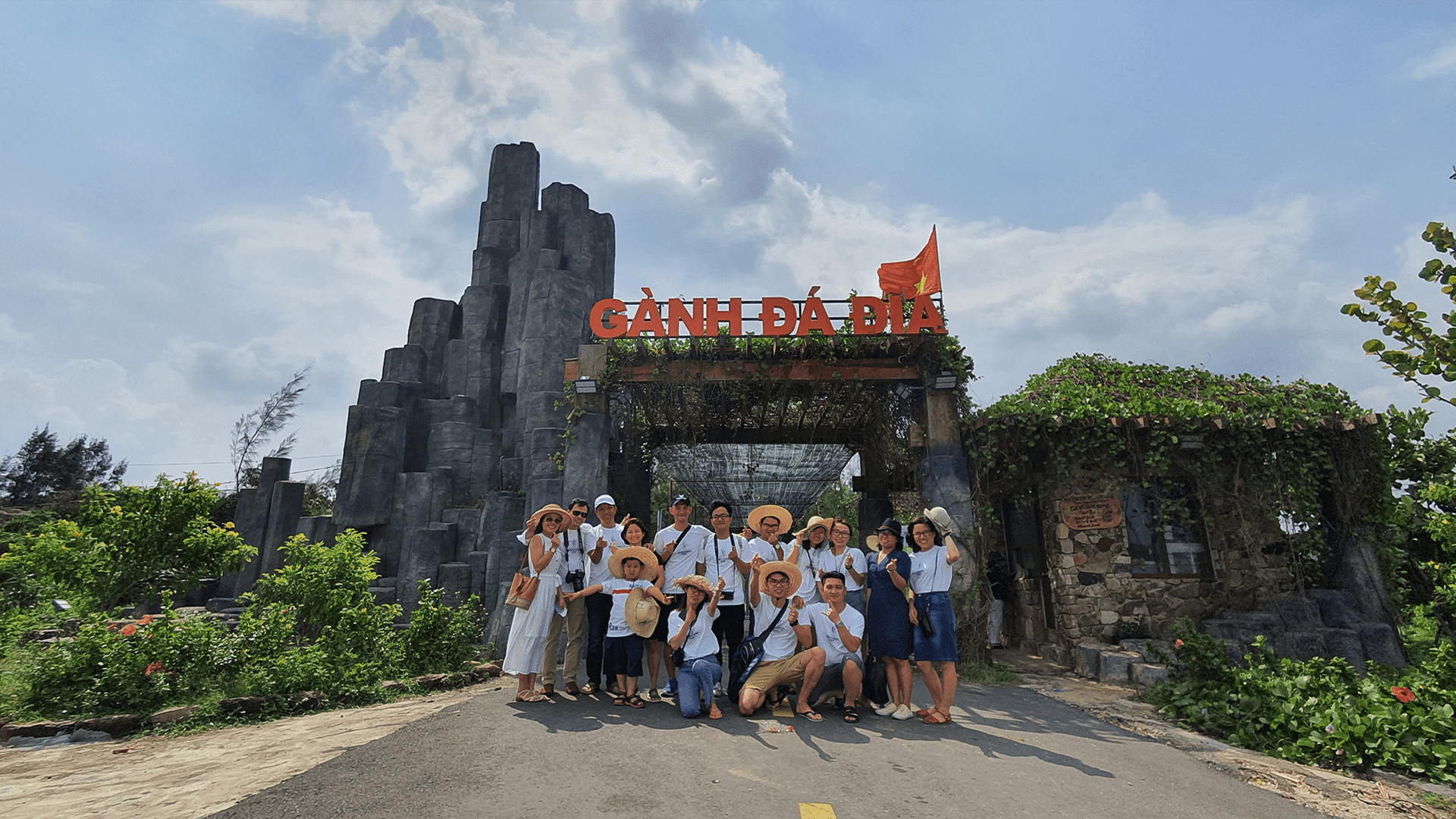
SECOMM COMPANY TRIP 2019 – PHU YEN
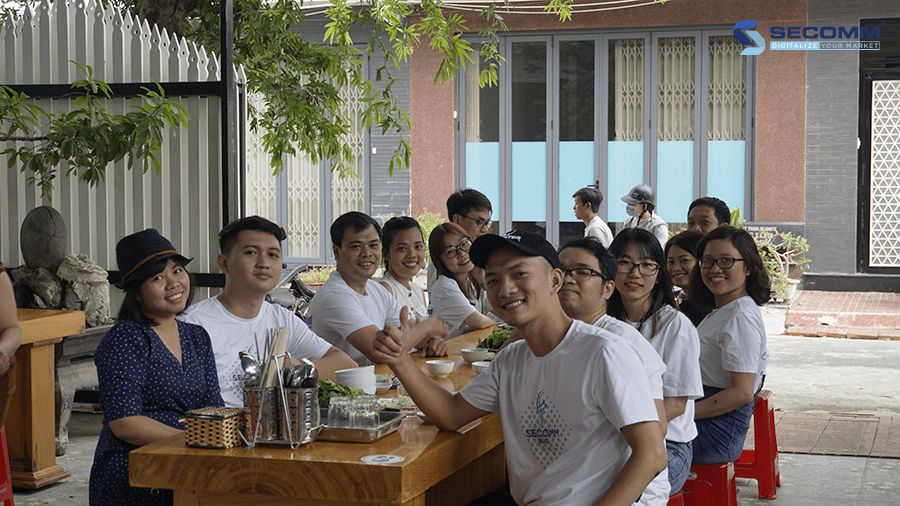
SECOMM Day 1
Said hello to Phu Yen at 7:30 a.m; we had gorgeous moments to enjoy the crisp, fresh air at the railway station, then followed the way leading to Mang Lang Church. The church stayed about 30km far from Tuy Hoa City to the north, was a Roman catholic construction built-in 1892 with two bells at the peak and the cross in the middle. Classic scenery created a fantastic background in many photos of us.
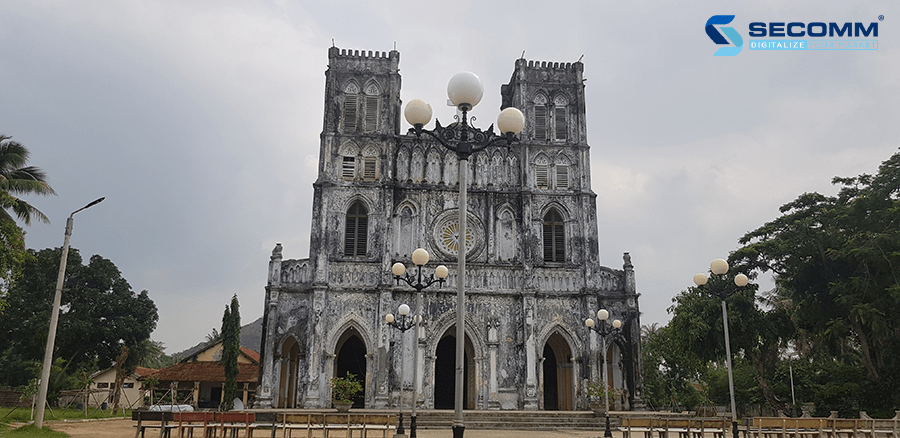
We continued moving to Da Dia Reef (or Ganh Da Dia in Vietnamese) on the same route. Everybody needed to walk along a small path from the entrance gate to see the basalt rock area.
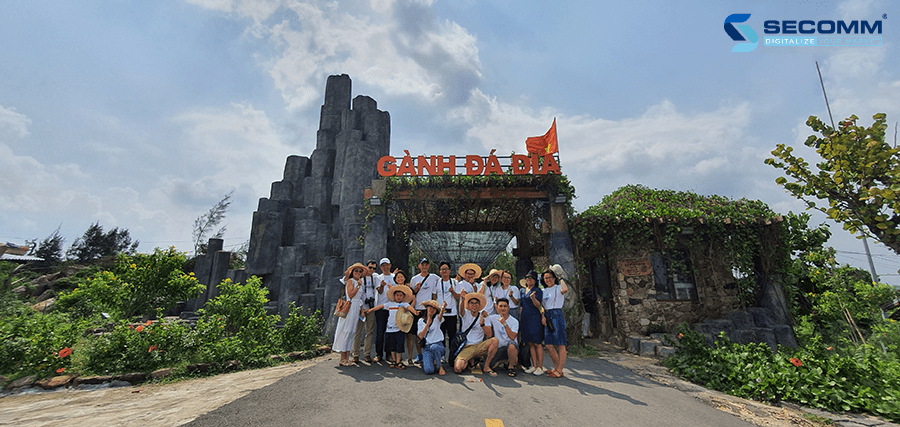
As the Phu Yen natives, rock structure seemed like a giant beehive with stacking pillars from various shape-rocks, from circular looks to polygonal appearances.
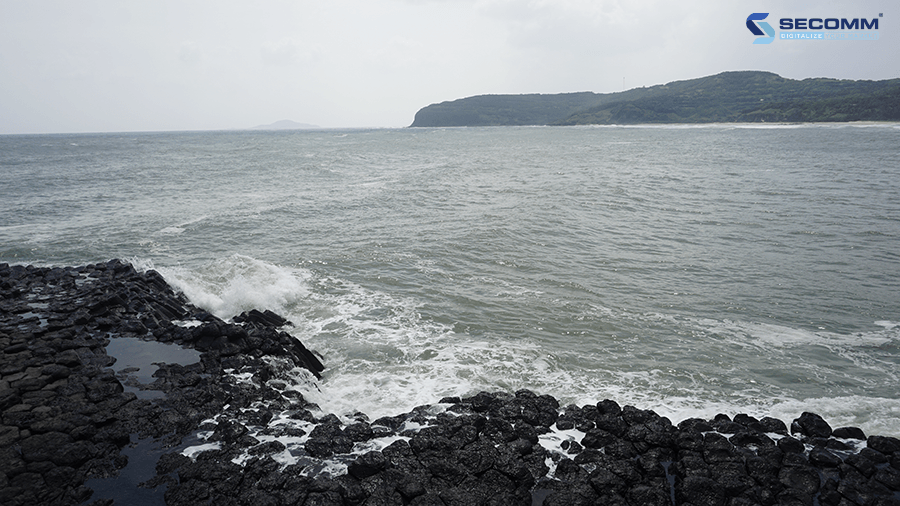
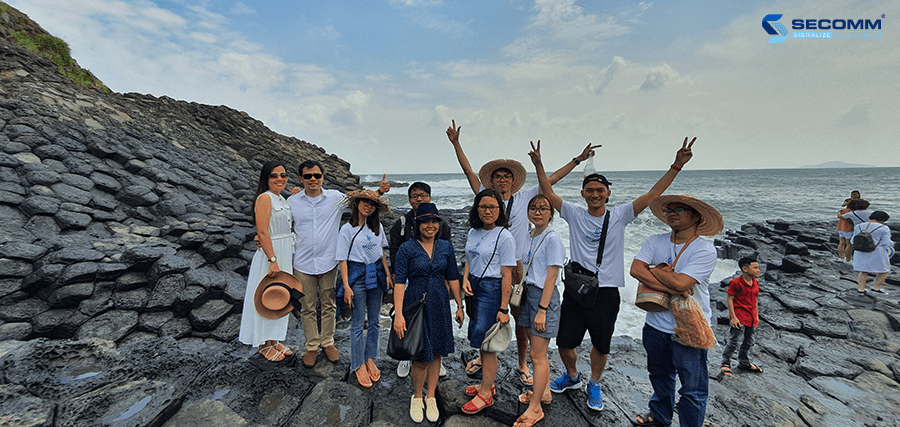
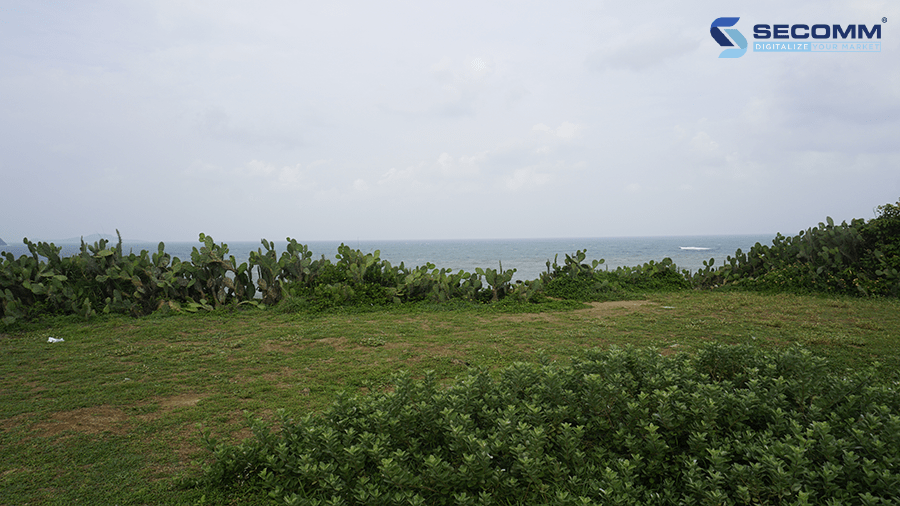
In the next stopping-place, all the Secommers chose to walk together at the famous coastal land that appeared in the film “Yellow flowers on the green grass”.For ending the day-one-journey, we went to Nhan Tower in the evening. There was no particular expectation for that place, but its beauty truly caught our eyes. The tower looked mystic and fanciful under the warm light by night and was shining in the middle of the high land.

We went back to the hotel then joined an exciting SECOMM game show. It was a puzzle game for the three teams. However, what made it challenging to play was that the topic focused on everyday work and other areas of life.The atmosphere was getting more intense towards the end, and the winner finally came out to gain the worthy prize. Above all, the award could not be as crucial as the memorable moments we spent together.
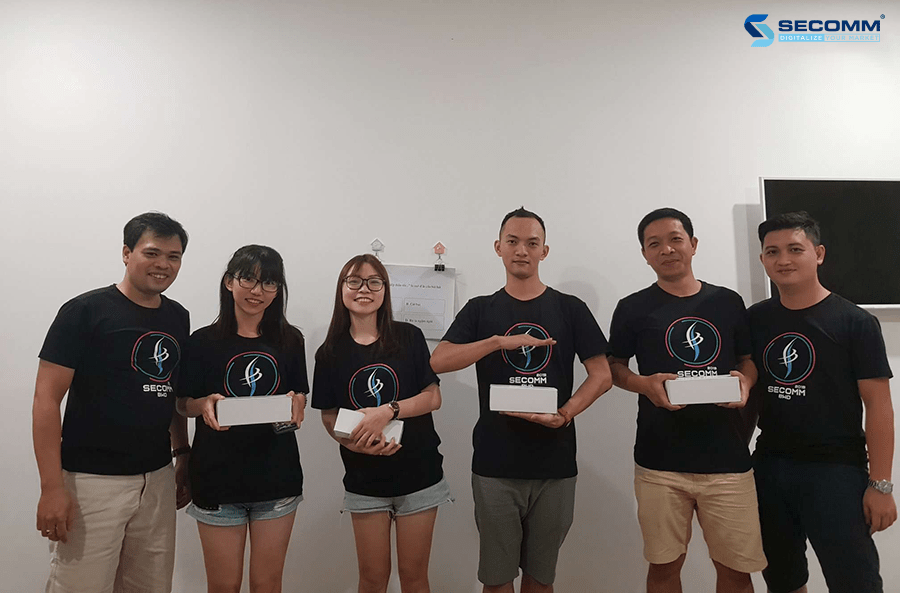
SECOMM Day 2
On the second day, we spent the whole morning discovering the easternmost of Vietnam – Dai Lanh Cape. Walking on a small path leading to the Cape with lots of stairs, we also caught Mon Beach’s view. It was a small beach surrounded by mountains, white sand, and clear water. What a picturesque view!
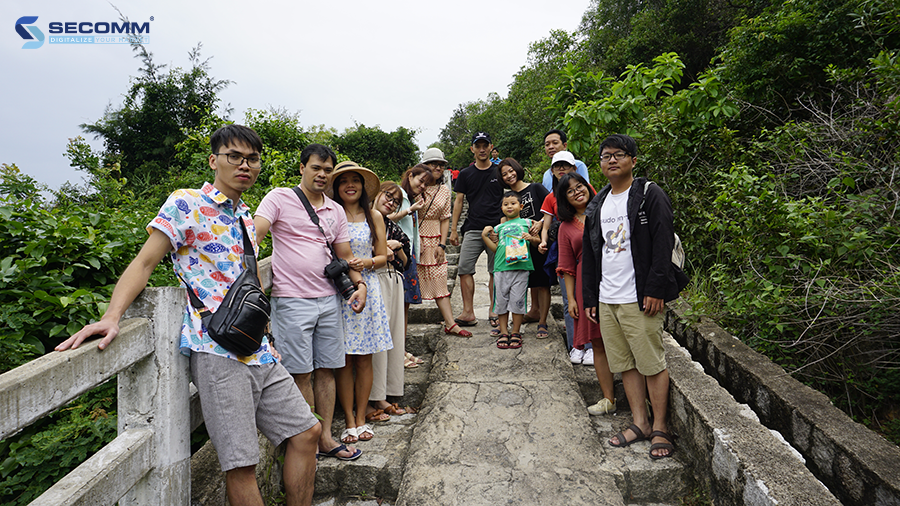
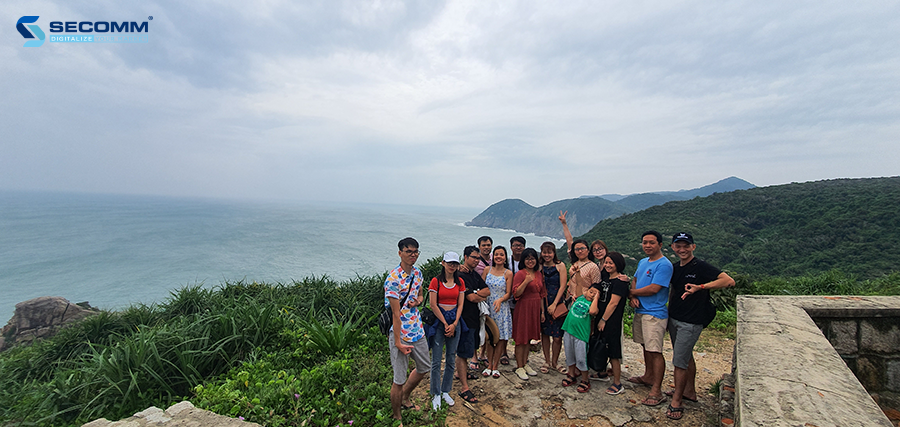
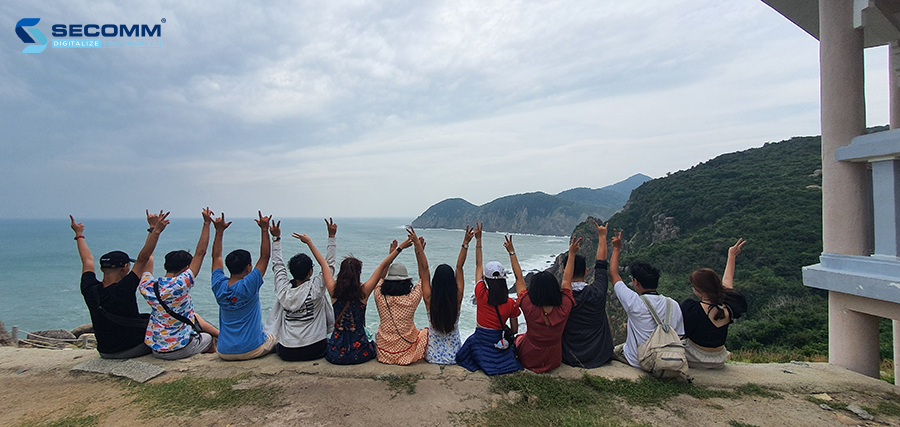
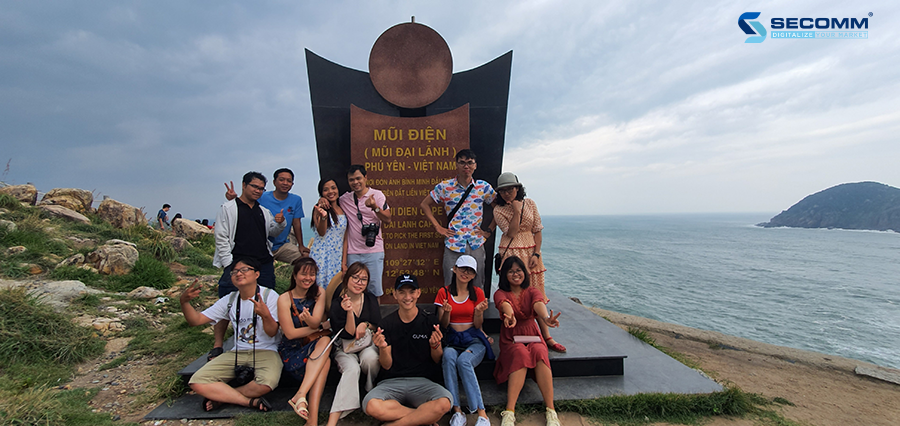
It was then lunchtime. We continued to drive to the eco-floating rafts at Vung Ro Bay to eat all kinds of seafood.
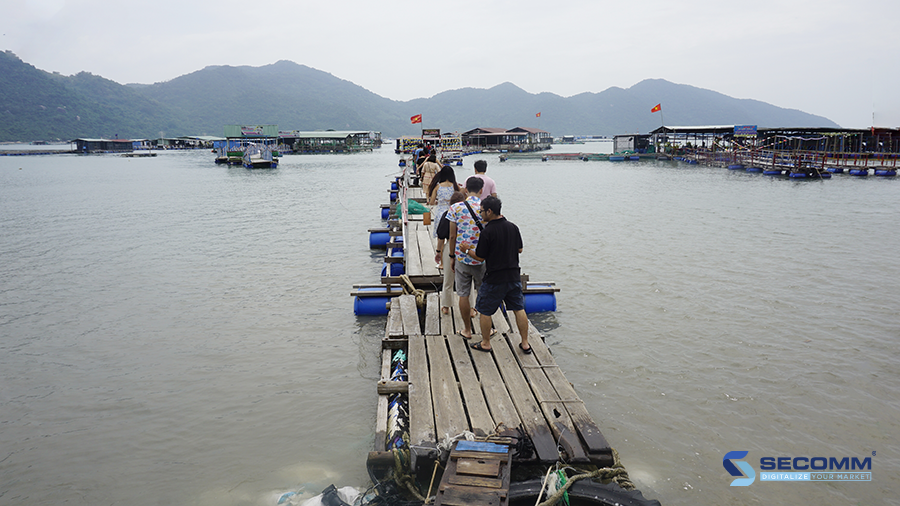
We traveled around the city at night and bought some souvenirs, then took time to relax and prepare for the flight back to Sai Gon the next morning.
Goodbye, Phu Yen, SECOMM will be back!
 2
2

 1,282
1,282

 0
0

 1
1
- 1
- 2





